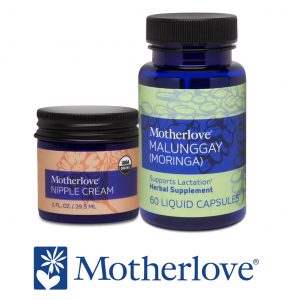
Nourish 2022
Infant and Toddler Feeding Summit
presented by
The Leaky Boob Nourish Infant and Toddler Feeding Summit is a free event in 5 sessions supporting families in their infant and toddler feeding journeys.
Featuring live webinar sessions on topics related to infant and toddler feeding, Q&A’s with experts, and giveaways, Nourish meets parents and caregivers where they are with information they need to make the informed decisions necessary for reaching their baby and toddler feeding goals. The underlying theme for Nourish 2022 is “what I wish I had known” and a look at some of the aspects of infant and toddler feeding that are often neglected or ignored in typical conversations and education about infant and toddler feeding.
Nourish presenters included hospital and private practice clinicians and educators recognized for their leadership in understanding some of the more complex social-emotional and physical feeding challenges facing parents today. With practical action steps families can implement immediately, Nourish 2022 presenters share evidence based information and give parents the tools they need to feed their children with loving confidence.
Each session was recorded live and is available to view or listen to as a video on demand.
Nourish 2022 Sessions
- Biting, Twiddling, and Other Annoying Behaviors; Dominique Gallo, IBCLC
Session Q&A - Burping for Boobs and Bottles; Rachelle Markham, IBCLC
- Lactation Q&A with Kristin Cavuto, IBCLC
- Solid Myths; Dawn Winkelmann, SLP
- Bottles Up! Bryna Hayden, IBCLC
The Leaky Boob Nourish Infant and Toddler Feeding Summit is presented by Naturepedic Organic Mattresses with sessions sponsored by the following brands:
Lily Jade Diaper Bags (Discount code: TLB10 for 10% off purchases over $125)
Ready Rocker (Discount code: TLB30 for 30% off entire site)
ezpz (Discount code: LeakyBoob10 for 10% off)
Amara Foods (Discount code: TLB15 for 15% off)
Belabumbum (Discount code: Leaky15 for 15% off)
Milkies milk savers and storage trays (Discount code: LeakyBoob15 for 15% off your entire purchase)
MiaMily (Discount code: TLBAIR20 for $20 off the HIPSTER Air – through August 18th only)
Bamboobies
The Grand Giveaway for the summit totals over $2,300 and is active through August 31st, 2022! Click here to enter.
The following brands and products are included in the Grand Giveaway:
Naturepedic– Certified Organic Pillow and Protector Set – Retail Value of $307
- (2) Organic 2-in-1 Adjustable Shredded Latex Pillows (standard size)
- An Organic Waterproof Mattress Protector Pad (winner to choose size)



Ready Rocker– Portable rocker to turn anywhere into a soothing rocker! Retail value: $149.99 – 5 winners
Amara– $100 shop credit.
Bamboobies– hands-free pumping and nursing bra, $35 value – 5 winners
Belabumbum– $100 gift certificate (Enora nursing bra and matching panties pictured)
ezpz– First Foods Sets in Sage at a retail value of $37.49 – 3 winners
Caroline in Old English Leather, super lux leather with faux leather options. incredibly comfortable and totally packable. Retail Value: $380
MiaMily– HIPSTER Air Baby Carrier, Retail Value: $159
Milkies– 1 Milk-Saver & Milk Tray, Retail value: $47.90.
Boba– A Boba wrap and Boba X carrier bundle. Retail Value of $200
Use code BOBABABY15 for 15% off all products

Fat Brain Toy Co– Nigi-Nagi-Nogi By Moluk, Retail Value: $16.95 – 5 winners
Use code GG-3836 for 10% off 1 item
Night Weaning Gently Workshop- One Night Weaning Gently Workshop registration. Retail value: $295

Weaning Gently Workshop– One Weaning Gently Workshop registration. Retail value: $325
Martin-Weber Relationship and Family Coaching- 1 Free Consult and 2 Free Relationship or parenting coaching sessions with Martin-Weber Coaching. Value $350



































































